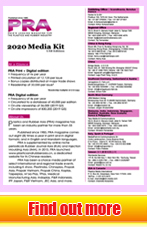Packaging Sector: Packaging with benefits
The packaging industry has notched up brownie points in the issue of recycling, with increasing use of post-consumer recycled (PCR) plastic content in their outputs, according to Angelica Buan in this report.
Less packaging is a new normal for brands
As brands fight for consumer attention, manufacturers are riled up over making their products stand out on shelves. Whether it is good or bad, packaging gives the initial impression to consumers. That is why designs now vary to cater to aesthetics and usage preferences. But when it boils down to it, the fierce shelf competition results in a design overkill, and this may do more harm than good to the brand.

According to an online survey conducted by Ipsos MORI and packaging firm Mondi, British consumers are more likely to switch to products with less packaging. More than 2,000 UK respondents aged 16-75 participated in the survey, which revealed that packaging can make or break brands.
More than half of the surveyed individuals said that when shopping for food and everyday household items, they would switch to a different brand if it used less packaging. What this means is that sustainability in packaging has become a crucial determinant for purchasing decisions.
Mondi commented that the survey results highlight the importance of incorporating sustainability in their packaging development and production. Mondi works with its customers to create EcoSolutions – an approach that creates bespoke packaging solutions that will ensure businesses can protect the product, promote the brand and deliver on their sustainable packaging commitments.
Meanwhile, taking a cue on the importance of using materials sustainably, US flexible packaging maker ProAmpac has joined the Association of Plastic Recyclers (APR), a trade association representing companies responsible for more than 90% of the postconsumer plastic processing capacity in North America. Through APR, ProAmpac says it aims to advance its ProActive Sustainability platform towards a more circular economy.
From waste to resource
In an era of speed and convenience throwing away what no longer serves its purpose makes sense. However, this trend also gives rise to a culture of wastage.
According to the Asian Development Bank (ADB), global plastic waste, which represented 12% of all municipal solid waste (MWS), racked up 242 million tonnes in 2016. At the time of the audit, East Asia and the Pacific had yielded 57 million tonnes.
Together with Central Asia, Europe yielded 45 million tonnes. Against the back of this, the region launched the Plastic Waste programme in 2018, which aims to make all plastic packaging recyclable by 2030 and ensure that waste generated on ships is returned to land (EU 2018b).

In India, plastic waste generation takes up nearly 7% of the MSW, according to the Central Pollution Control Board (CPCB). Thus, in 2015 it hatched a programme called Plastics for Change, which takes a shot at ethically sourced recycled plastics to reduce plastic pollution and poverty in the region through recycling.
hese and similar drives are benefitting the post-consumer recycled (PCR) plastics market to increase the utilisation of materials derived from recycled waste. Projected to exceed US$10 billion by 2024, the growth of the PCR market, according to a Markets and Markets research, latches on the brisk demand for sustainable packaging.
Asia: mining for PCR packaging materials

We have heard it before: some countries in Asia are among the worst plastic polluters in the world, according to a 2017 report by Ocean Conservancy and McKinsey Center for Business and Environment.
Needless to say, the region is collectively targeting to increase recycling rates to reduce the amount of waste plastics in the environment. With infrastructure for recycling being built and improved, Asia, a ripe source for PCR plastic resins, is poised to corner the US$25.7 billion PCR market size by 2025, based on a report by Grand View Research. It said that the growing demand for recycled films from various end-use industries is anticipated to drive the growth.
Industry majors, like chemical firm Dow, are meeting this demand for PCR films. The company has recently developed and commercialised a new formulated PCR plastic resin designed for collation shrink film applications in Asia-Pacific.
The new resin is designed with 40% PCR content, which creates a film with performance comparable to those made with virgin resins. The product, XUS 60921.01, is made with recycled plastics collected domestically within China through Dow’s strategic recycling partners and is made at Dow’s external manufacturing site in Nanjing, China.
(PRA)
Subscribe to Get the Latest Updates from PRA Please click here
©2020 Plastics and Rubber Asia. All rights reserved.

©2020 Plastics and Rubber Asia. All rights reserved.
Home Terms & Conditions Privacy Policy Webmail Site Map About Us



















